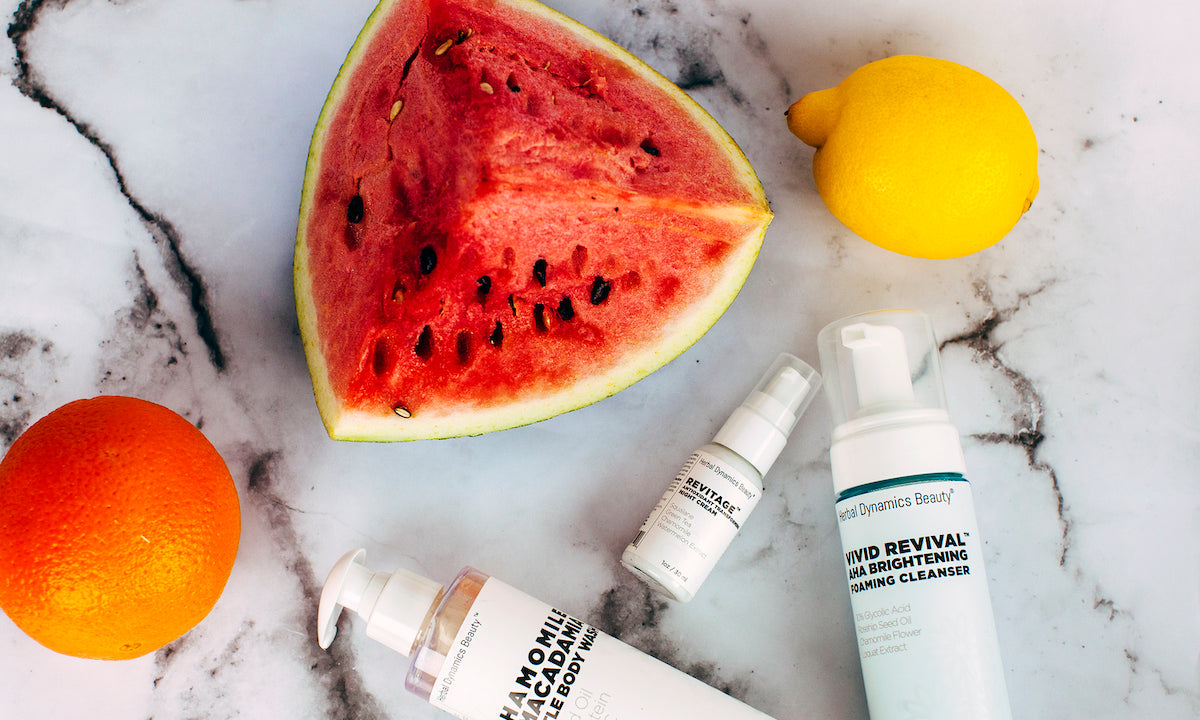Your Cart is Empty
FREE SHIPPING on US orders over $45. Save 25% With Code TAKE25 at checkout.
FREE SHIPPING on US orders over $45. Save 25% With Code TAKE25 at checkout.

Clean, organic, natural, cruelty-free — when it comes to the beauty industry, the FDA has yet to regulate how these words can be used (or define what they actually mean).
And yet, they’re everywhere!
Beauty aisles are packed with “clean” labels: vibrant green leaves alongside clean beauty buzzwords (green, non-toxic, vegan, sustainable), cleverly designed to convince conscious consumers that the creams and serums they’re buying are totally safe and environmentally friendly — when that’s not always the case.
If you’re curious about what “clean beauty” really means, read on for the latest in non-toxic skincare and makeup.
It sounds simple enough, but there is actually no universal definition of “clean beauty”. Due to lack of governmental oversight, beauty companies in the U.S. are left to regulate themselves.
That means beauty and skincare brands can use words like natural, clean, non-toxic, and green regardless of a product’s ingredient list. So a so-called “natural” cream can actually contain nearly all artificial ingredients.
Activist groups, including the Environmental Working Group and the Campaign for Safe Cosmetics, have taken it upon themselves to help conscious consumers make safer choices when it comes to beauty and personal care products.
The science behind the trend has propelled efforts like theirs into a national movement, educating millions of people about toxic chemicals in cosmetics and calling for safer products in the marketplace.
To us, clean beauty products contain ingredients that are ethically sourced and made with the health of our bodies and the environment in mind. Like others clamoring for safer options and more transparency about ingredients and formulas, we firmly believe that what you put on your body is of utmost importance.
Ingredients can be harmful for a number of different reasons. Some are known to cause dry skin while others have been linked to more serious health problems like cancer and reproductive toxicity.
We all deserve to know what’s in our products. Here’s a short list of chemicals to avoid to make sure every ingredient you use is effective and safe.
Parabens are a group of chemicals widely used as preservatives in cosmetics and body care products. These chemicals are added to prevent and reduce the growth of bacteria and mold, which can increase product shelf life.
Scientific studies suggest that parabens can disrupt hormones in the body and have also been linked to reproductive toxicity, neurotoxicity, immunotoxicity, and skin irritation.
Banned from cosmetics in the European Union, phthalates are still widely used in color cosmetics, shampoo, hairspray, nail polish and other beauty products sold in the U.S.
Phthalates are used to help ingredients penetrate the skin and extend the shelf life of fragrances. The concern is that these chemicals have been linked to obesity, infertility, reduced sperm count, reproductive malformation, breast cancer, and cardiovascular events.
Tip: Phthalates are often abbreviated as DBP, DEHP, and DEP on product labels.
“Fragrance” is a term used on product labels to represent an undisclosed mixture of various scent chemicals and ingredients. This is a problem, since it doesn’t actually tell you what’s in the product.
Fragrances often include phthalates and other endocrine disrupting compounds. Fragrance formulas have also been associated with allergies, dermatitis, respiratory distress and potential negative effects on the reproductive system.
The Environmental Protection Agency (EPA) has classified formaldehyde as a “probable human carcinogen.” This chemical, which helps prevent microbes from growing in water-based products (like shampoo, body wash, bubble bath, and nail polish), can be absorbed through the skin and has been linked to cancer and allergic skin reactions.
Hydroquinone is most commonly used as a topical bleaching agent. It can be found in skin-lightening creams and serums, and is heavily marketed towards women of color.
Since hydroquinone bleaches the skin, it can be helpful in treating melasma and other forms of hyperpigmentation. In the US, it is sold over the counter in two percent concentrations and stronger formulas are available by prescription.
The concern is that hydroquinone works by decreasing the production of melanin pigments in the skin, increasing the skin’s exposure to UVA and UVB rays and in turn increasing the risk of skin cancer. It has also been linked to decreased immune response, abnormal function of the adrenal gland, certain cancers, and a skin condition known as ochronosis.
These perceived risks have led to restricted use in Canada and a ban on the ingredient in the European Union, Australia, and Japan.
There is a lot of misinformation when it comes to cosmetic formulas. Clearly, there is a need for more research, stronger regulations, and greater transparency in the beauty industry.
Until then, reading labels and knowing your ingredients is one of the best ways to avoid potentially harmful chemicals. You can also search ingredients on EWG’s Skin Deep Cosmetic Database or the Think Dirty app for more information on health concerns and safer alternatives.